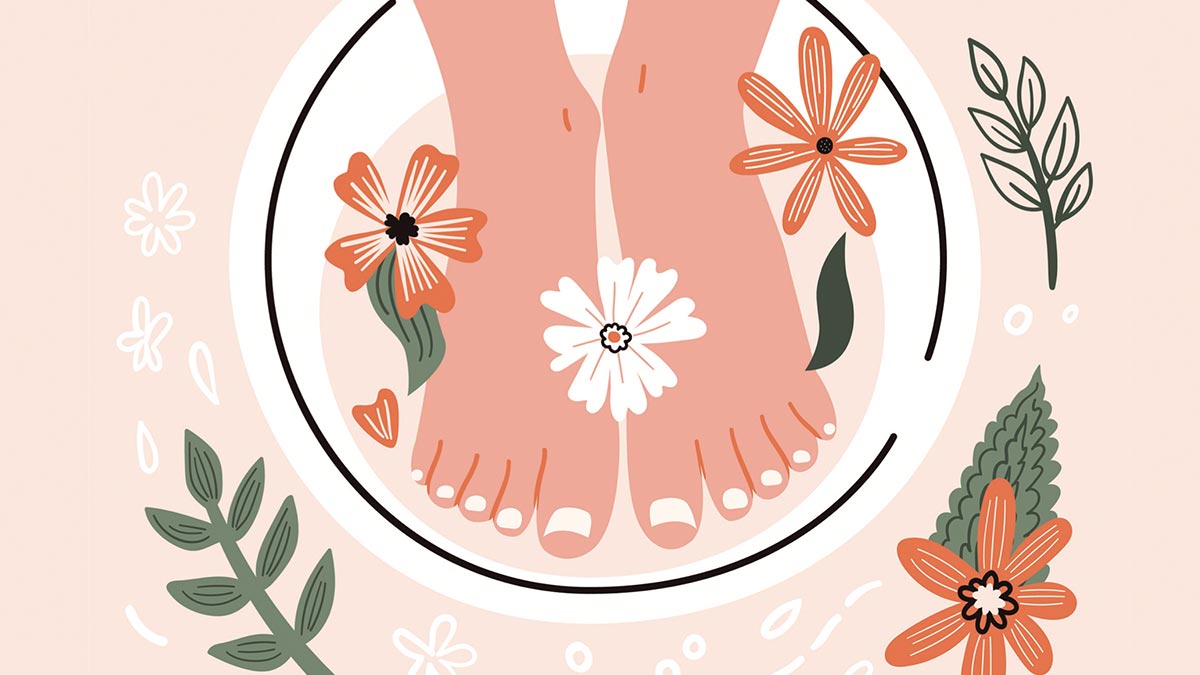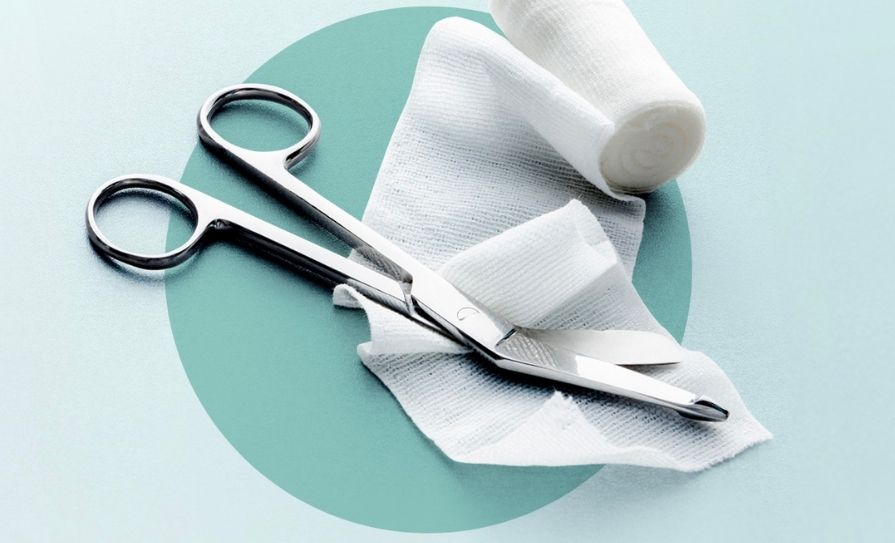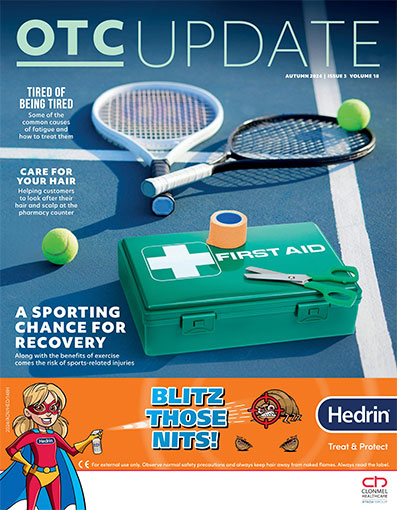With regular foot care, patients can manage everyday foot issues like calluses, blisters, and fungus infections with help from their pharmacist, but older adults need to be mindful about certain problems that can impede their foot health, like diabetic foot, writes Donna Cosgrove, PhD
Introduction
Humans have used footwear for about 30,000 years, originally with the aim of protecting the foot.1 On average we walk about 100,000 miles in our lifetime, so its not surprising that many of us require treatment for foot conditions due to wear and tear, among other things. Foot pain affects about 30 per cent of the population. It can impact quality-of-life, as well as some foot problems associated with disability and fall related morbidity.2 In particular, aging is associated with changes in foot characteristics, which impact foot pain and functional ability. Women are more likely to have poor foot health compared to men.
In order to help keep their feet healthy, people should be advised to:3
- Wear properly fitting shoes
- Wear flip-flops in eg, changing rooms and showers to avoid verrucas and athlete’s foot
- Keep the feet clean, dry them properly after a bath, shower or swimming, and let air get to the toes when possible.
- Wear cotton socks and change them everyday.
- Alternate between different pairs of shoes so that they have a chance to dry out before being worn again.
- Don’t share towels when they have an infectious foot problem such as a verruca, athlete’s foot, or a fungal nail infection.
Many common ailments can be adequately managed with over-the- counter products (OTC) products.
Footwear
Incorrectly fitted footwear leads to a host of problems including structural foot disorders, corns, and calluses.
As foot morphology can be highly variable from person to person, finding the correct fit from an “off the shelf” shoe can be tricky. Authors of a review estimating the prevalence of incorrectly fitted footwear and its effects, which included 18 studies, found that between 63 and 72 per cent of people wore an incorrect shoe fit, based on length or width.1 A strong association was observed between footwear that was too tight and foot pain, with between 84 and 91 per cent of people with tight shoes reporting pain. Incorrectly fitted footwear is also associated with lesser toe (ie, the second to the fifth toes) deformity and the presence of corns in older people. There was also a strong link between incorrectly fitted shoes in older people with diabetes and current foot ulceration – people with foot ulceration were five-times more likely to be wearing incorrectly fitted shoes than those without ulceration.
For people (like pharmacy staff) who stand for most of the workday, shoes that provide comfort and support are
Foot complications are a cause of morbidity and mortality in diabetes, as well as leading to an increase in healthcare costs
very important. The right shoe size is required for comfort. The shoe should be about a thumb width longer than your longer toe to allow for swelling of the feet, which is likely if standing all day, and the shoe should accommodate the widest part of the forefoot comfortably.4 Too tight or small shoes can cause ingrown toenails, calluses, corns, and pain and rubbing on the metatarsal joints, or neuroma (nerve damage). Appropriately structured and supportive shoes are necessary in this kind of work also, because if the foot position
is compromised, this can result also in improper positioning further up in the knees, hips, and back. A stable shoe base (and heel counter) can help prevent this.
Older people
In a Finnish study looking into foot care in older people,6 participants described the practice of foot self- care as the following practices:
1) nail cutting;
2) washing the feet;
3) drying the feet;
4) using exfoliators and foot files;
5) soaking the feet in water;
6) moisturising the legs and feet;
7) massaging the feet;
8) exercising the feet;
9) wearing hosiery; and
10) wearing shoes. However, taking care of the rest of the body was prioritised over the feet.
Nail-cutting was one of the most difficult self-care activities for participants. Stiffness of the back, old age, and gaining weight impeded the nail-cutting position. Nail-cutting was also the main reason for seeking help for foot care.

Table 1: Guidelines for proper shoe fit to avoid foot problems5
Diabetes
Foot complications are a cause of morbidity and mortality in diabetes, as well as leading to an increase in healthcare costs. Incidence of peripheral neuropathy and peripheral arterial disease in diabetes is linked with a higher risk of developing foot ulcers and infection that may lead to amputation.7 Structural deformity, limited joint mobility, microvascular complications, increased levels of glycated haemoglobin (HbA1C), and onychomycosis are also linked with increased risk for developing a foot ulcer. Adults with diabetes have a 20-times greater likelihood of being hospitalised for non-traumatic lower limb amputation than adults without diabetes. Prevention through education and early and aggressive treatment of foot problems is important for diabetic foot care.
Bunions (hallux valgus)
These are characteristic deformities at the first metatarsophalangeal joint which can lead to osteoarthritis of the joint.2 There is a higher prevalence of bunions in the female population (female:male ratio of 9:1), which is likely due to both biomechanics (joint laxity/ instability) and shoe wear demands.8 Conservative treatment typically involves modification of shoe wear with splints, pads, and orthotics; with varying degrees of success. Indications for surgical correction include painful progressive deformity and inhibition of activity or lifestyle.
Corns and calluses
These are hyperkeratotic conditions caused by the stimulation of the epidermis through increased pressure or friction, for example, shoes, repetitive movements, and bunions. Treating these conditions involves redistributing forces to allow the skin to heal. Thick, cushioned socks with wide, comfortable shoes with a low heel, and a soft sole that does not rub can help, as well as use of soft insoles/heel pads. Measures like soaking corns and calluses in warm water to soften them, regularly using a pumice stone/foot file to remove hard skin, and moisturising to help keep skin soft are also useful.9
Onychomycosis
Onychomycosis is a fungal infection of the nail, causing discoloration and thickening of the affected nail plate,
and is the most common nail infection worldwide, caused by dermatophytes and non-dermatophytes.10 Microscopy and fungal culture are the gold standard techniques for onychomycosis diagnosis. It has an estimated prevalence of 6-to- 14 per cent in the general population
Plantar fasciitis is pain on the bottom of the foot, around the heel and arch
and is more common in people with tinea pedis. Oral antifungals have higher cure rates and shorter treatment periods than topical treatments, but have adverse side-effects such as hepatotoxicity and drug interactions.
Plantar fasciitis
Plantar fasciitis is pain on the bottom of the foot, around the heel and arch. It is due to straining the plantar fascia, which connects the heel to the toes.11 In 80 per cent of cases of plantar fasciitis, symptoms resolve with OTC and home therapies within six months of starting treatment. Successful therapies address biomechanical and environmental factors like a reduced angle of ankle dorsiflexion (raising toes towards shin), prolonged standing, and obesity. Stretching can provide relief because it counteracts shortening of the plantar fascia.2 It seems likely that plantar fasciitis is not due to inflammation, but rather repetitive microtears in the contracted fascia.
The idea that there is no inflammatory mechanism behind the condition could explain why NSAIDs often do not work very well in this condition, and why OTC remedies like heel cups are at least as effective as steroid injections. Studies have shown that OTC shoe inserts are as effective as custom orthotics for improving plantar fasciitis pain.
Tinea pedis
Tinea Pedis, or athlete’s foot, is a fungal infection of the skin caused by dermatophytes, usually Trichophyton rubrum, Trichophyton mentagrophyte, and Epidermophyton floccosum.12 Over 70 per cent of the population experience athlete’s foot at some stage. Tinea pedis onychomycosis (nail involvement) is more common in older people. Strategies to prevent it include ensuring that the interdigital spaces dry, wearing well- ventilated shoes and socks made of natural fibres, and covering the feet when in communal areas. Tinea pedis is successfully treated with both topical allylamines (eg, terbinafine 1 per cent) and azoles (eg, miconazole 2 per cent), with allylamines possibly superior in efficacy to azoles. Topical terbinafine has been found to work more quickly (within one week within many cases), whereas longer use of topical azoles is required.13 Antifungal powder can help keep the interdigital area dry.
Warts and verrucas
These are most common in childhood, affecting 20 per cent of children aged four-to-12 years of age. Most (two-thirds) resolve spontaneously within two years.2 It can take weeks or even months for a wart or verruca to appear after infection. If the wart or verruca breaks up and bleeds, the virus spreads more easily.
To help stop the infection spreading:14 ?Wash hands after touching a wart or verruca.
- Change socks daily.
- Cover with a plaster when swimming.
- Take care not to cut a wart when shaving.
The aim of treatment is to remove the wart without it returning and without scarring. The main treatments include salicylic acid and cryotherapy. There is not much evidence to indicate which of these types of OTC treatment is superior to the other.15 Overall, the evidence for the use of salicylic acid products is the most consistent.
Xerosis
Xerosis is dryness in the epidermal layers of the skin which results in scaling, flaking and itching.16 Topical moisturisers are beneficial in managing this skin dryness with the most beneficial being those that contain higher urea concentrations (40 per cent).
Footcare in pharmacy
People frequently visit community pharmacies for foot care advice and treatments of related foot conditions. Many of these can be sufficiently treated, or even prevented, with advice and products from the pharmacy. Older people and people with diabetes are particularly susceptible to foot problems and may appreciate some time to learn more about foot care.
References
1. Buldt AK, Menz HB, 2018. Incorrectly fitted footwear, foot pain, and foot disorders: A systematic search and narrative review of the literature. Journal of foot and ankle research, 11(1), 1-11.
2. Available at: www.aafp.org/pubs/ afp/issues/2018/0901/p298.html.
3. National Pharmacy Association, 2019. Footcare. Available at: www.npacpdhub.co.uk/444273- footcare-2019.
4. Available at: https://respod. co.nz/2020/04/17/supporting- our-pharmacists-and-pharmacy- technicians-some-tips-for-those-long- days-on-your-feet/.
5. Bedinghaus JM, Niedfeldt MW, 2001. Over-the-counter foot remedies. American Family Physician, 64(5), 791-797.
6. Miikkola M, Lantta T, Suhonen R, Stolt M, 2019. Challenges of foot self-care in older people: A qualitative focus-group study. Journal of Foot and Ankle Research, 12(1), 1-10. Available at: www.ncbi.nlm.nih.gov/pmc/articles/PMC6339366/.
7. Embil JM, Albalawi Z, Bowering K, Trepman E, 2018. Foot care. Canadian Journal of Diabetes, 42, S222-S227. Available at: www.canadianjournalofdiabetes. com/article/S1499-2671(17)30830- 4/fulltext.
8. Hart ES, Deasla RJ, Grottkau BE, 2008. Current concepts in the treatment of Hallux valgus. Orthopaedic Nursing, 27(5), 274-280.
9. National Health Service, 2022. Corns and calluses. Available at: www.nhs.uk/conditions/corns- and-calluses/.
10. Gupta AK, Stec N, Summerbell RC, Shear NH, Piguet V, Tosti A, Piraccini BM, 2020. Onychomycosis: A review. Journal of the European Academy of Dermatology and Venereology, 34(9), 1972-1990.
11. National Health Service, 2022. Plantar fasciitis. Available at: www. nhs.uk/conditions/plantar-fasciitis/.
12. Ward H, Parkes N, Smith C, Kluzek S, Pearson R, 2022. Consensus for the treatment of tinea pedis: A systematic review of randomised controlled trials. Journal of Fungi, 8(4), 351. Available at: www.mdpi.com/2309- 608X/8/4/351/html.
13. Thomas B, Falk J, Allan GM, 2021. Topical management of tinea pedis. Canadian Family Physician, 67(1), 30-30.
14. National Health Service, 2020. Warts and verrucas. Available at: www.nhs.uk/conditions/warts-and- verrucas/.
15. Kwok CS, Gibbs S, Bennett C, Holland R, Abbott R, 2012. Topical treatments for cutaneous warts. Cochrane database of systematic reviews, (9). Available at: www.cochranelibrary.com/cdsr/ doi/10.1002/14651858.CD001781. pub3/full.
16. Parker J, Scharfbillig R, J ones S, 2017. Moisturisers for the treatment of foot xerosis: A systematic review. Journal of Foot and Ankle Research, 10(1), 1-10. Available at: https://jfootankleres. biomedcentral.com/articles/ 10.1186/s13047-017-0190-9.







